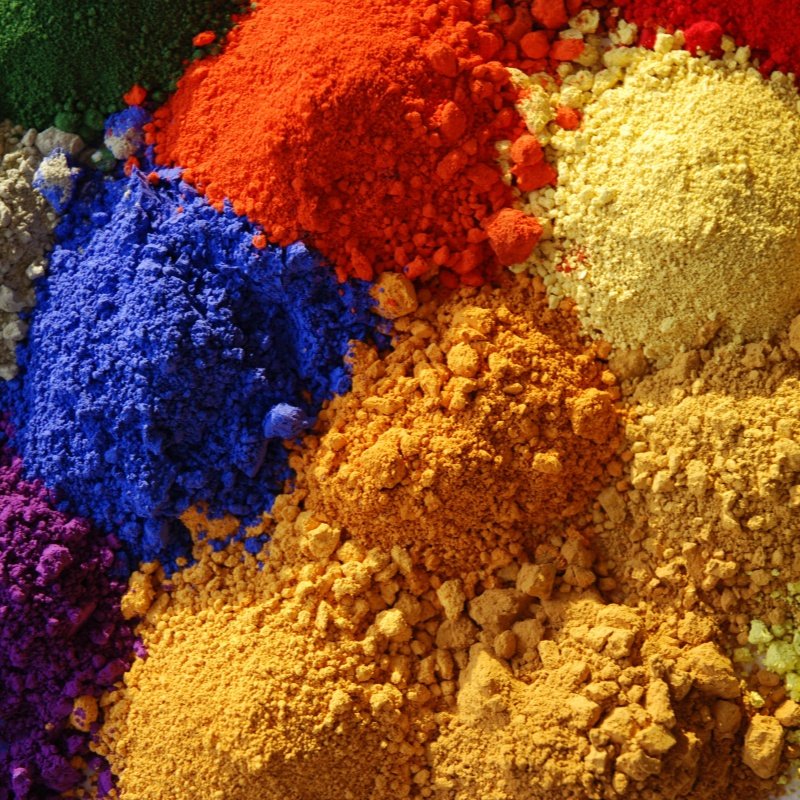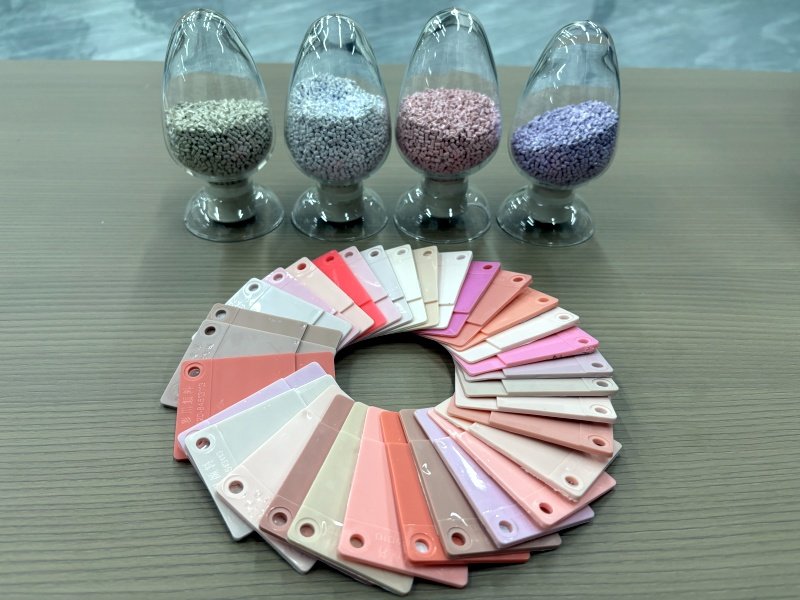In today’s fast-paced world, where branding and identification play a crucial role in product differentiation, laser marking has become a popular method for marking and engraving plastics due to its high precision and durability. It is an essential process in the plastic manufacturing industry. However, not all plastics are suitable for laser marking, which is where laser marking additives come in. Laser marking additives for plastics have revolutionized the industry, providing a cost-effective and efficient solution for achieving high-quality, permanent markings on plastic surfaces. In this blog post, we will explore the world of laser marking additives for plastics, discussing their principles, advantages, and considerations for selecting the right additive for your plastic polymers.
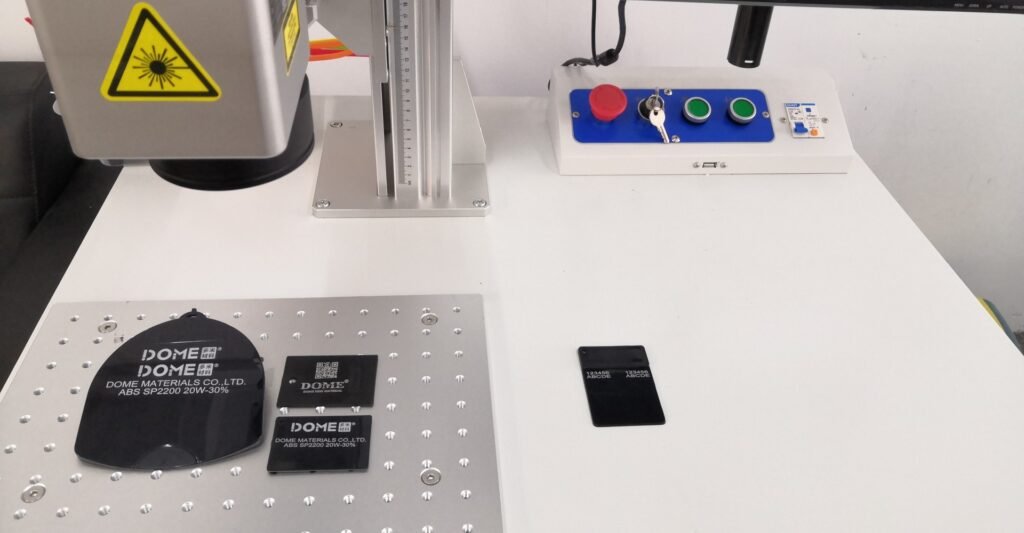
What is laser marking of plastics?
Laser marking is a non-contact method of engraving or marking materials using a laser beam. In the case of plastics, laser marking enables precise and permanent markings on the surface without causing damage or deformation. Laser marking provides several advantages over traditional marking methods, including high precision, speed, and design flexibility.
This technique is extensively utilized in various manufacturing industries such as automotive, electronics, medical devices, and consumer goods to mark products with logos, serial numbers, and other identifying information. It offers a versatile solution for a wide range of applications, including product branding, identification, and traceability.
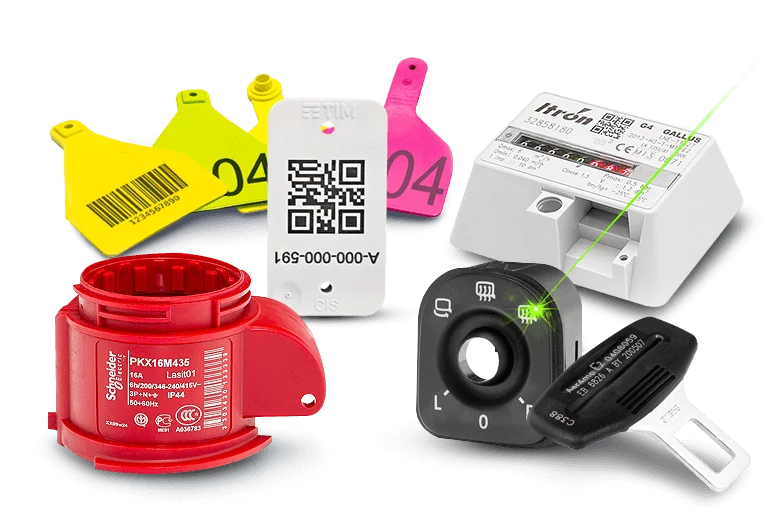
The Principle of Laser Marking for Plastics:
The principle behind laser marking for plastics lies in the interaction between the laser beam and the laser marking additive. When the laser beam hits the surface of the plastic material, it is absorbed by the additive, which then generates heat. This heat causes a localized reaction on the surface, resulting in a change in color, texture, or both. The laser parameters, such as power, speed, and frequency, can be adjusted to achieve different marking effects, including surface etching, color change, or foaming.

What are the advantages of plastic laser marking?
Plastic laser marking offers several advantages that make it a preferred choice in various industries.
Firstly, it provides permanent and highly legible markings on plastic surfaces.
This is crucial for product identification, traceability, and branding purposes. The laser marking process ensures that the markings are resistant to fading, smudging, or being removed, ensuring long-lasting visibility.
Secondly, plastic laser marking is a non-contact and non-invasive technique.
Unlike traditional methods such as engraving or ink printing, laser marking does not require physical contact with the surface. This eliminates the risk of damaging the plastic material, maintaining its integrity and quality. Additionally, the non-contact nature of laser marking allows for the marking of delicate or sensitive plastic components without causing any harm.
Another advantage of plastic laser marking is its versatility.
Laser technology offers high precision and control, allowing for the creation of intricate and detailed markings. This flexibility enables manufacturers to mark various shapes, sizes, and materials of plastic, catering to a wide range of products. Moreover, laser marking can be easily adapted to accommodate changes in design or information, providing flexibility in customization.
Furthermore, plastic laser marking is a fast and efficient process.
The laser beam operates at high speeds, resulting in quick and accurate markings. This enables manufacturers to meet production deadlines and maintain high productivity levels. Additionally, laser marking does not require any drying or curing time, eliminating the need for additional processing steps and reducing overall production time.
Lastly, plastic laser marking is an environmentally friendly solution.
The process does not involve the use of inks, solvents, or chemicals, minimizing waste generation and reducing the carbon footprint. Laser marking is a clean and sustainable method that aligns with the growing demand for eco-friendly manufacturing practices.
In conclusion, plastic laser marking offers numerous advantages, including permanent and legible markings, non-contact and non-invasive application, versatility, efficiency, and environmental sustainability. These benefits make plastic laser marking a preferred choice for industries seeking high-quality and reliable marking solutions for their plastic products.
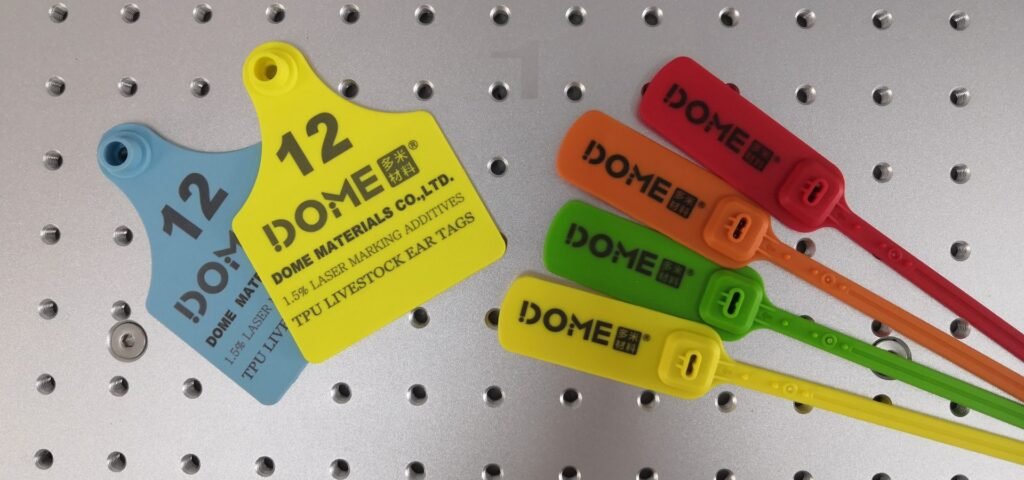
Factors Affecting the Result of Plastic Laser Marking:
Plastic laser marking is a widely used technique that offers precise and permanent markings on various plastic materials. However, achieving optimal results requires careful consideration of several factors.
The first factor to consider is the type of plastic materials being marked.
Different plastics have varying chemical compositions and physical properties, which can influence their response to laser marking. Some plastics, such as ABS and polycarbonate, are more suitable for laser marking due to their high absorption of laser energy. On the other hand, certain plastics, like polyethylene and polypropylene, have low absorption rates and may require the use of additives or specialized laser types.
The second factor is the type of laser being used.
Lasers come in various types, including CO2, fiber, and UV lasers, each with its own characteristics and wavelength. The choice of laser type depends on factors such as the desired marking depth, speed, and material compatibility.
Furthermore, laser settings and parameters play a crucial role in achieving the desired marking result.
Factors such as laser power, focus, scanning speed, and pulse duration need to be adjusted to ensure proper interaction with the plastic material. Improper settings can lead to inadequate marking, melting, or discoloration.
The design and complexity of the marking also influence the final result.
Complex designs or intricate details may require specialized techniques or higher laser power settings to achieve satisfactory markings. Additionally, considerations such as line thickness, font size, and spacing play a significant role in determining the visibility and legibility of the marking.
Additives used in plastic laser marking can also impact the result.
Laser marking additives are often employed to enhance the absorbance of laser energy, improve contrast, or provide specific colors. These additives are mixed with the plastic material before the marking process and can influence the marking quality and readability.
The color of the plastic material is another crucial factor.
Light-colored plastics tend to exhibit better contrast when laser marked, making the marking more easily visible. In contrast, darker-colored plastics might require higher laser power settings to achieve the desired mark visibility.
In addition, specific additives like flame retardants, if present in the plastic material, can affect the laser marking process.
Flame retardant additives may alter the thermal properties of the plastic, making it more resistant to laser energy absorption or resulting in discoloration or degradation.
Finally, environmental factors can also influence the plastic laser marking process.
Factors such as temperature, humidity, and air quality can impact the laser marking performance and result. For example, excessive moisture in the environment can cause poor marking quality or sputtering during the marking process.
In conclusion, achieving a successful plastic laser marking result requires careful consideration of various factors. The type of plastic, laser type, laser settings, design complexity, additives used, plastic color, presence of other additives, and environmental conditions all play crucial roles in the final outcome. By understanding and appropriately addressing these factors, manufacturers can achieve high-quality and durable markings on plastic materials.
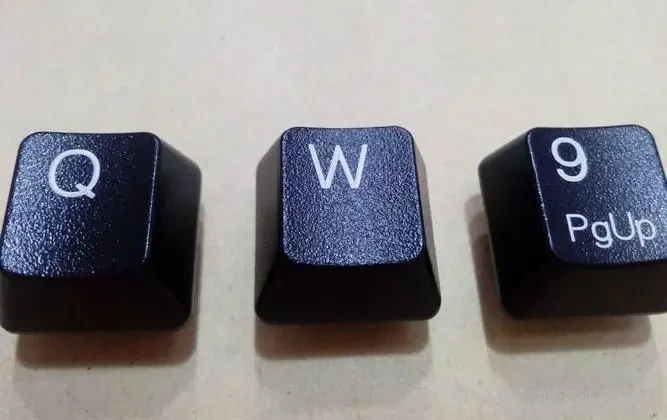
What are laser marking additives for plastics?
Laser marking additives are specialized substances added to plastic polymers to improve their laser marking abilities. These additives typically contain pigments or dyes that can absorb laser energy and create a clear mark on the plastic surface.
There are various types of laser marking additives available, each with its own characteristics and applications. Some additives are suitable for marking specific types of plastics, while others are more versatile and can be used with different plastic materials. They come in different forms, such as powders, pellets, and masterbatches, and can be customized to match specific plastic polymers and laser systems.
Laser marking additives can be incorporated into the plastic material during manufacturing. They are designed to enhance the absorption of laser energy, ensuring a legible mark. They also help in reducing the heat generated during the laser marking process, which can potentially damage the plastic.
In addition to enhancing laser marking capabilities, these additives may also provide other benefits such as UV resistance, lightfastness, and improved adhesion. They can be customized to meet specific requirements, including color, opacity, and thermal stability.
Overall, laser marking additives play a crucial role in achieving high-quality and durable markings on plastic products. They offer a cost-effective and efficient solution for adding logos, barcodes, serial numbers, and other identification marks to a wide range of plastic materials.
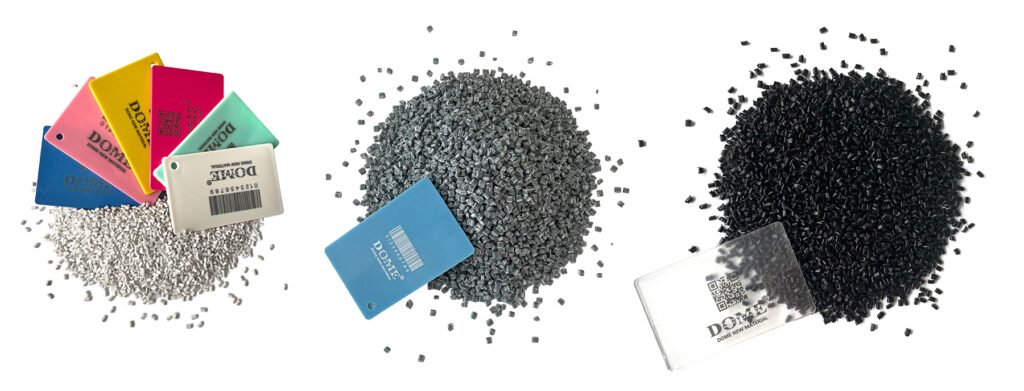
Why You Need to Use Laser Marking Additives for Your Polymers?
In the world of polymer manufacturing, precision and durability are paramount. Whether you are producing plastic components for the automotive industry or creating intricate designs for consumer products, it is essential to ensure that your polymers are marked accurately and permanently. This is where laser marking additives come into play.
Laser marking additives are specially formulated substances that enhance the laser marking process on polymers. By incorporating these additives into your polymer formulations, you can achieve high-quality, long-lasting markings that are resistant to fading, smudging, and abrasion. This is particularly crucial for industries that require clear identification, traceability, and branding on their products.
One of the key advantages of using laser marking additives is their compatibility with a wide range of polymers.
These additives can be used with various types of plastics, including polyethylene, polypropylene, polycarbonate, and polyamide. This versatility allows manufacturers to maintain consistency in their marking processes across different materials, ensuring uniformity and efficiency in production.
Moreover, laser marking additives offer excellent adhesion properties, ensuring that the markings adhere firmly to the surface of the polymer.
This is essential for applications where the marked information needs to withstand harsh environmental conditions, such as extreme temperatures, exposure to chemicals, or outdoor elements. Laser markings created with these additives exhibit excellent resistance to fading, ensuring that the information remains legible throughout the product’s lifespan.
Another significant advantage of laser marking additives is their ability to produce high-contrast markings.
These additives enhance the absorption of laser energy, resulting in dark, crisp, and highly visible markings. This is particularly beneficial for applications that require precise and detailed markings, such as barcodes, serial numbers, or logos. The enhanced contrast ensures easy readability and accurate scanning, contributing to improved efficiency and productivity.
Furthermore, laser marking additives offer manufacturers the flexibility to customize their markings.
These additives can be tailored to produce different colors, allowing for easy differentiation and identification of products or parts. This customization capability is especially valuable in industries where color coding or branding plays a crucial role in product identification and quality control.
In conclusion, laser marking additives are indispensable tools for achieving high-quality, durable, and customizable markings on polymers. By incorporating these additives into your polymer formulations, you can ensure clear identification, traceability, and branding on your products. The compatibility, adhesion properties, high-contrast capabilities, and customization options provided by laser marking additives make them invaluable for polymer manufacturers across various industries.
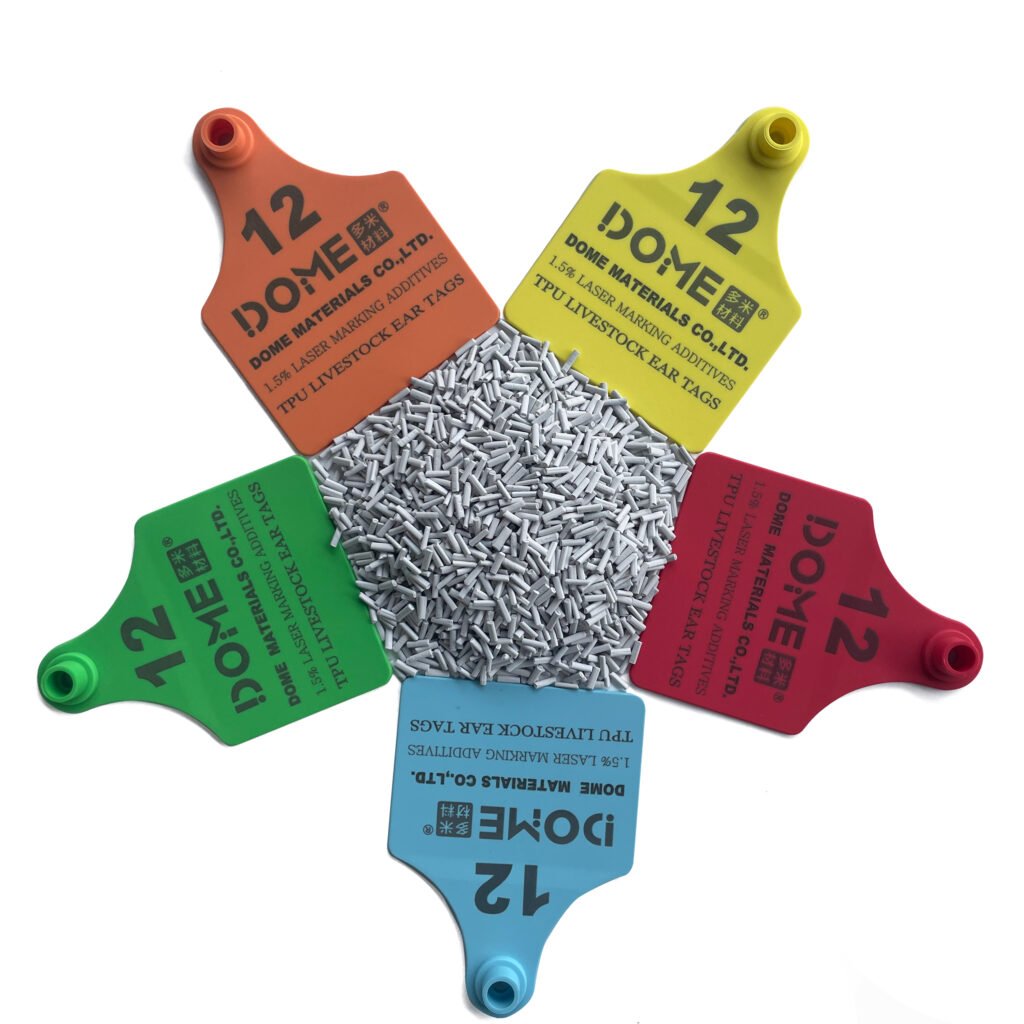
Will plastic laser marking additives affect the color of the products?
When using laser marking additives, a common concern is whether they will impact the color of the plastic product. While laser marking can indeed result in a color change, this effect can be minimized by choosing the appropriate additive. Most laser marking additives are specifically designed to create a dark mark on light-colored plastics, ensuring good contrast without significantly altering the original color of the product.
The color of a plastic product is determined by various factors, such as the type of plastic used, the manufacturing process, and any additives incorporated. Laser marking additives are typically added to plastics to enhance their laser marking capabilities, enabling precise and permanent markings.
However, it is important to note that these additives can indeed alter the color of the plastic. The degree of color change depends on the specific additive used and its concentration. Some additives may cause a slight shift in color, while others can significantly change the hue or intensity of the product’s color.
Manufacturers must carefully consider the desired color outcome when incorporating laser marking additives into their plastic products. Thorough testing and analysis are essential to ensure that the desired color is achieved without compromising the integrity of the product.
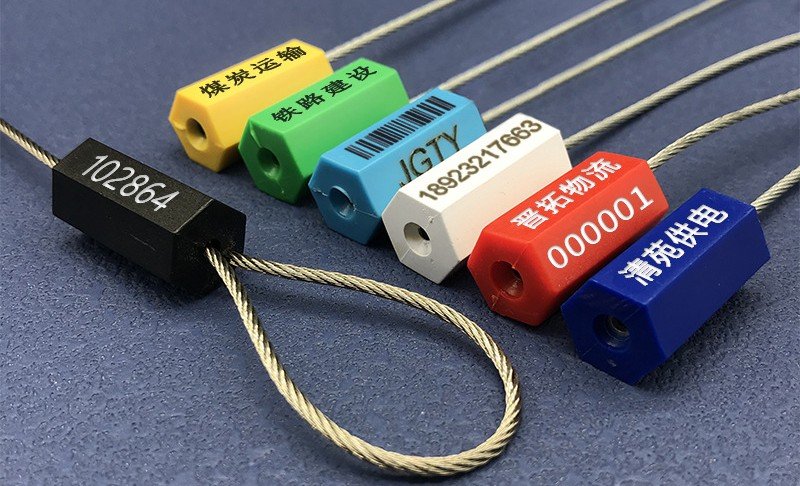
When should laser marking additives be used?
Laser marking additives are particularly useful when marking plastics that are difficult to mark using conventional methods. These include materials with low surface energy, such as polyethylene and polypropylene, as well as transparent or light-colored plastics.
And they should be used when a permanent and high-quality marking is required on a variety of materials, including PP, PE, PS, PVC, ABS, PA6, HIPS, PC+ABS, TPU, TPE, ETC. This makes them an ideal choice for industries that deal with different types of materials and require consistent and durable markings.
Laser marking is a non-contact and non-invasive method that uses laser technology to create precise and permanent marks on surfaces. This technique is widely used in industries such as automotive, electronics, medical, and aerospace.
In conclusion, laser marking additives should be used when permanent, high-quality, versatile, and precise marking is required on various materials. Their ability to create durable and detailed marks, along with their environmental benefits, make them an ideal choice for industries that value efficiency, sustainability, and product integrity.
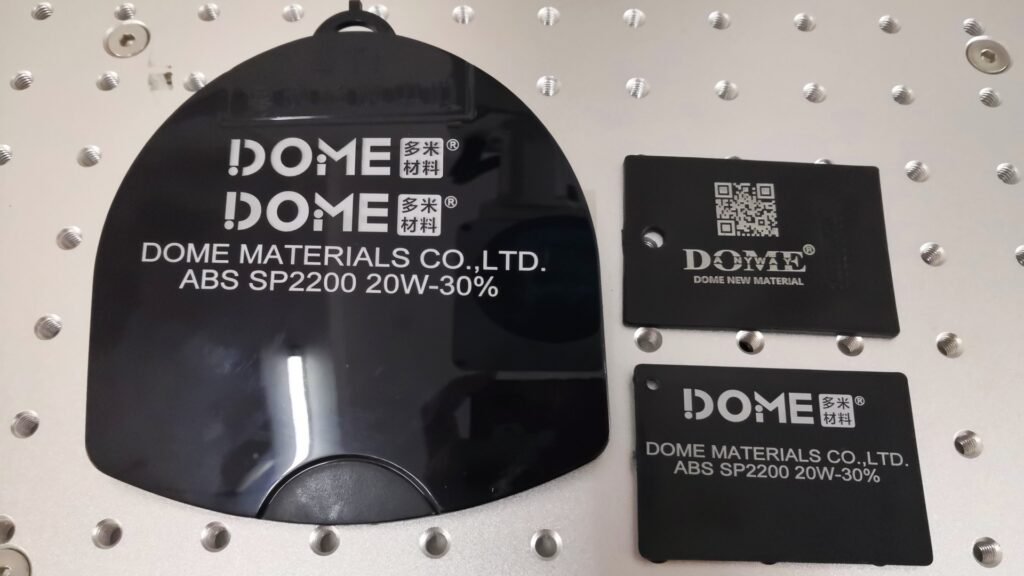
What should be paid attention to when using plastic laser marking additives?
When using plastic laser marking additives, it is essential to follow the manufacturer’s instructions carefully. Additives should be added in the correct proportions and mixed thoroughly with the plastic before processing. And several considerations should be taken into account.
Firstly, compatibility between the additive and the plastic polymer must be ensured to achieve optimal results. Secondly, the concentration of the additive should be optimized to achieve the desired marking quality without affecting the product’s properties.
Additionally, it is also crucial to ensure proper laser parameter settings, including power, speed, and focus, to obtain consistent and reliable results.
Furthermore, adequate ventilation and safety measures should be in place to protect operators from potential hazards associated with laser marking.
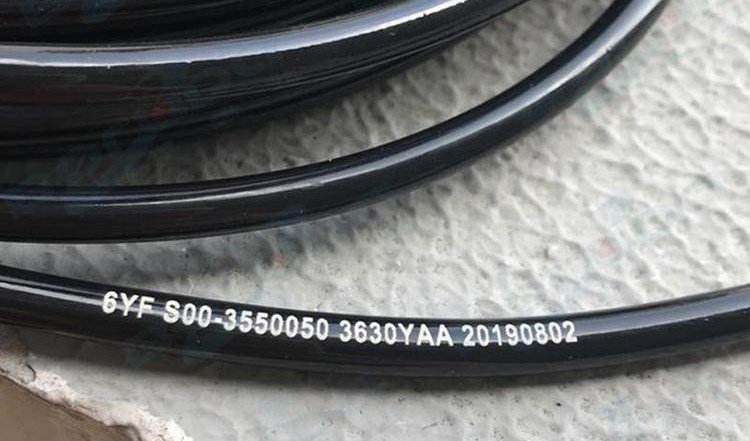
How to Select the Right Laser Marking Additive for Your Plastic Polymers?
Plastic polymers have become an integral part of our daily lives, being used in a wide range of applications. From packaging materials to automotive components, plastic polymers offer versatility and durability. However, when it comes to marking plastic polymers, traditional methods like ink printing or labeling may not always be suitable due to their limited durability. This is where laser marking additives come into play.
Laser marking additives are specially formulated materials that are added to plastic polymers to enhance their ability to be marked using lasers. These additives work by absorbing the laser energy and converting it into heat, which then interacts with the polymer to create a permanent mark. The choice of the right laser marking additive is crucial to ensure optimal marking quality and durability. Here are some factors to consider when selecting the right laser marking additive for your plastic polymers:
1. Compatibility:
The laser marking additive should be compatible with the specific polymer you are using. Different polymers have different chemical compositions and properties, and not all additives work well with all polymers. It is important to consult with the additive supplier or conduct compatibility tests to ensure that the additive will work effectively with your specific polymer.
2. Marking Contrast:
The laser marking additive should provide good contrast between the marked area and the surrounding material. This is important for the readability and visibility of the mark. The contrast can be influenced by several factors, such as the color of the polymer, the laser’s wavelength, and the concentration of the polymer. It is advisable to test different additives and concentrations to achieve the desired marking contrast.
3. Marking Speed:
The laser marking additive should allow for fast and efficient marking. Some additives may require higher laser power or longer exposure times to achieve a satisfactory mark, which can slow down the marking process. It is important to consider the desired marking speed and choose an additive that can meet those requirements without compromising the marking quality.
4. Durability:
The laser marking additive should ensure long-lasting and durable marks. The marked area should be resistant to fading, scratching, and other environmental factors. To ensure that the mark meets the required standards, it is advisable to conduct tests on its durability in various conditions, including exposure to sunlight, chemicals, and temperature fluctuations.
5. Regulatory Compliance:
Depending on the application of the marked plastic polymers, there may be specific regulatory requirements to meet. It is essential to ensure that the chosen laser marking additive complies with relevant regulations and standards, such as food contact regulations or automotive industry specifications.
In conclusion, selecting the right laser marking additive for your plastic polymers is a critical decision that can significantly impact the quality and durability of the marks. Considering factors such as compatibility, marking contrast, marking speed, durability, and regulatory compliance will help you make an informed choice. Consulting with additive suppliers and conducting thorough testing will further ensure the success of your laser marking process. By selecting the right additive, you can achieve precise, durable, and high-quality marks on your plastic polymers, opening up new possibilities for product identification and branding.

The Best Plastic laser marking solution at DOME Materials | a leading laser marking additives manufacturer in China:
When it comes to laser marking additives for plastics, DOME Materials stands out as a leading manufacturer and supplier. DOME Materials, with extensive experience and knowledge in the industry, provides a diverse selection of laser marking additives designed to improve the laser marking capabilities of various plastic polymers. They provide customized solutions to meet the specific needs of their customers. Their additives have a reputation for delivering exceptional performance, reliability, and compatibility across a wide range of plastic materials. DOME Materials also provides technical support and guidance to help customers select the right additive and optimize their laser marking process.
Conclusion:
Laser marking additives for plastics have revolutionized the plastic industry, providing a cost-effective and efficient solution for achieving high-quality, permanent markings on plastic surfaces. By understanding the principles, advantages, and considerations of laser marking additives, manufacturers can make informed decisions when selecting and using these additives.
DOME Materials, as a reputable manufacturer, offers a reliable and effective solution for plastic laser marking needs. With the right laser marking additive and proper application techniques, manufacturers can achieve superior marking results and enhance the value of their plastic products. With the expertise and support of leading manufacturers like DOME Materials, the possibilities of plastic laser marking are truly endless.
Experience the best plastic laser marking solution in the market by choosing DOME Materials. With our advanced technology, expertise, and commitment to sustainability, we are the trusted choice for leading companies worldwide.
Contact us today to discuss your laser marking needs and discover how our solution can elevate your business. Visit our website at www.dome-materials.com or call us at +86-13798308944. Experience the DOME Materials difference and revolutionize your plastic laser marking process.

